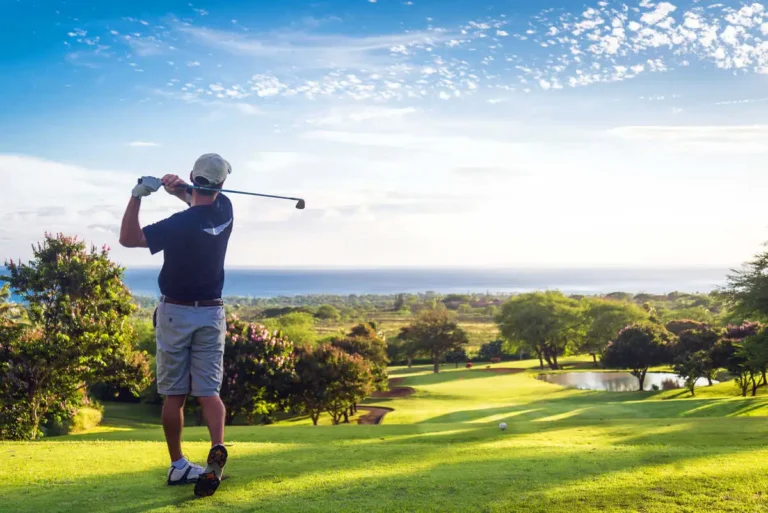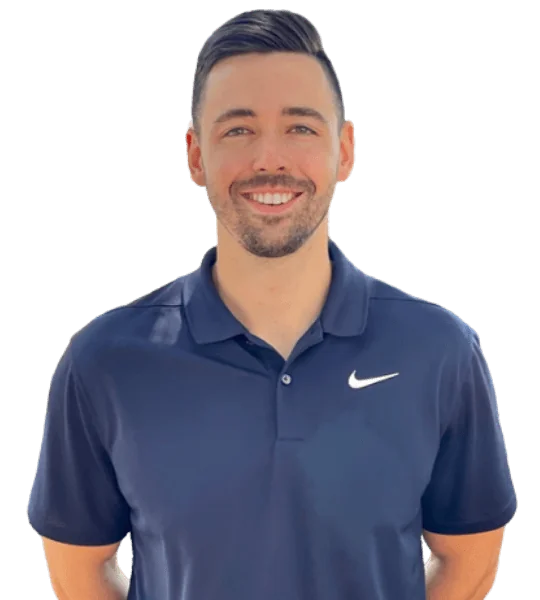
What Is Golf Therapy?
Golf therapy is a specialized branch of physical therapy tailored specifically for golfers seeking to prevent, manage, or recover from injuries associated with the sport. It addresses not only the unique physical demands golf places on the body, but also optimizes movement patterns to enhance performance and reduce the risk of recurring injuries. Whether you’re an avid player or a recreational golfer, seeking out physical therapy for golfers near me can make a tangible difference in your recovery journey and your game.
At its core, golf therapy combines the science of rehabilitation with an understanding of the specific mechanics required in golf swings. Unlike general physical therapy, which deals with a broad spectrum of injuries and populations, golf therapy is individualized to address the repetitive motions, postural demands, and impact forces encountered during golf. Sessions often include thorough assessments of swing mechanics, strength, flexibility, and joint mobility, ensuring that treatment plans are directly applicable to your needs on the course.
How Does Golf-Specific Therapy Differ From General Physical Therapy?
Golf-specific therapy is distinct because it incorporates assessments and interventions directly linked to golf movements—think rotation, grip, and stance patterns. Therapists use video swing analysis, functional movement screening, and golf-specific exercise regimens to identify inefficiencies or at-risk areas. This targeted approach helps address the root causes of discomfort, providing solutions that protect against the types of repetitive strain and overuse injuries common among golfers.
Typical Settings and Professionals Involved
You’ll find Golf physical therapy near me in outpatient clinics, sports medicine centers, and sometimes even at golf facilities themselves. Typically, these sessions are led by physical therapists with specialty training in sports medicine and additional certification or experience working with golfers. Collaboration with golf pros and athletic trainers further enhances care, bridging the gap between injury recovery and peak performance.
Benefits of Seeking Golf Physical Therapy
The advantages of engaging in golf therapy extend beyond just healing an injury. Individuals benefit from improved mobility, increased strength, and the restoration of safe, efficient swing mechanics. Frequent golfers often notice reduced pain, better endurance during play, and protective strategies that foster long-term joint and muscle health. By seeking Golf physical therapy near me, you’re not only addressing current injuries—you’re taking proactive steps toward optimizing your golf experience and maintaining an active lifestyle.
What Is the Most Common Injury in Golf?
The most common injury in golf is golfer’s elbow, medically known as medial epicondylitis. This condition is characterized by pain and inflammation on the inside of the elbow where the tendons of your forearm attach to the bony bump. While golfer’s elbow is often seen as the signature golf injury, golfers also frequently experience issues affecting the lower back, shoulders, and wrists. Recognizing early symptoms can help prevent these injuries from worsening and keep your time on the course pain-free.
What Are the Most Prevalent Golf Injuries?
The unique, repetitive motion of the golf swing puts specific stress on certain parts of the body, leading to a range of golf injuries. Besides golfer’s elbow, players commonly struggle with lower back strain, rotator cuff (shoulder) injuries, and wrist strains. Each of these injuries can stem from overuse, improper swing mechanics, lack of flexibility, or insufficient warm-up sessions. Understanding which injuries occur most often can empower you to take preventive action before pain puts you out of play.
Why Is Golfer’s Elbow So Common Among Golfers?
Golfer’s elbow arises because of repetitive gripping, swinging, and forceful impact during the golf swing, especially if technique is lacking or if players suddenly increase their practice volume. The stress accumulates in the tendons on the inside of the elbow, eventually causing microtears. If left unchecked, this pain can limit not only your game but also daily activities like lifting objects or even opening doors.
What Other Frequent Injuries Should Active Golfers Look Out For?
Low back pain is nearly as prevalent, largely due to the rotational forces and sometimes poor posture during the swing. The shoulder, specifically the rotator cuff, can suffer from impingement or tendinitis as it stabilizes your arms throughout each drive and putt. Additionally, wrist injuries are common from repeated impact or faulty swing patterns. Each injury presents a unique set of warning signs—persistent aches, loss of strength, restricted motion, or swelling—that shouldn’t be ignored.
Common Causes and Risk Factors for Golf Injuries
Many golf injuries stem from faulty swing mechanics, playing or practicing too frequently without rest, and a lack of proper conditioning or warm-up. Age-related changes in flexibility and strength also contribute. Poorly fitted clubs and hard-hitting surfaces can increase the risk, so a holistic approach—focusing on technique, foundational strength, and consistent stretching—is crucial for active adult golfers.
What Are the Signs and Symptoms of Golf Injuries?
Golfer’s elbow typically produces tenderness and pain on the inside of the elbow, sometimes radiating down the forearm. Watch for swelling, a weak grip, or pain when swinging or gripping a club. Back and shoulder injuries might present with aching, stiffness, or a catching sensation. Recognizing these early signs and seeking Golf Physical Therapy exercises can prevent injuries from becoming chronic concerns, ensuring you enjoy every round with confidence and comfort.
How Can Physical Therapy Help With Golfer’s Elbow and Other Golf Injuries?
Physical therapy plays a vital role in addressing golfer’s elbow and a range of golf injuries by focusing on effective pain management, restoring mobility, and building strength to prevent recurrence. Through an individualized assessment and care plan, physical therapists help active adults recover faster and return to the golf course with improved function and confidence. Whether you’re managing soreness in your elbow or struggling with back, shoulder, or wrist discomfort, evidence-based Golf Physical Therapy exercises tailored to your needs can provide noticeable relief and lasting improvements.
What Is Golfer’s Elbow and How Is It Treated?
Golfer’s elbow, or medial epicondylitis, is a common overuse injury resulting in pain and tenderness along the inner side of the elbow where the forearm tendons attach. Treatment goals focus on reducing pain and inflammation, promoting healing, restoring flexibility, and gradually rebuilding strength. Physical therapists at Bull City PT often incorporate manual therapy, soft tissue mobilization, and a progressive exercise program to support healing. Early interventions help prevent persistent problems, so addressing symptoms promptly is key to an efficient recovery.
Physical Therapy Assessment and Individualized Care
A thorough assessment by a licensed physical therapist is the cornerstone of a successful golf rehabilitation plan. Evaluation includes a review of your history, a careful look at your swing mechanics, and targeted movement screens to identify imbalances or faulty patterns. Personalized treatment plans not only resolve current symptoms but also target underlying factors that may contribute to repetitive strain.
Golf Physical Therapy Exercises for Golfer’s Elbow
Regular and progressive exercises remain central to the rehabilitation process. For golfer’s elbow, key therapy exercises may include wrist flexor and extensor stretches, eccentric forearm strengthening, grip exercises, and isometric holds. Your physical therapist will demonstrate these exercises and guide you on proper form and safe progressions, adjusting the routine as you heal. Adherence to your exercise program maximizes your chances for a full return to golfing activity.
Rehabilitation Strategies for Other Common Golf Injuries
Beyond the elbow, physical therapy offers targeted approaches for shoulder, back, and wrist injuries, all prevalent among golfers. Shoulder issues may be addressed through scapular stability and rotator cuff strengthening, while low back pain often responds to core stabilization and mobility work. For wrist pain, your therapist may recommend flexibility drills and specific grip training. Each plan is carefully tailored to reflect the unique demands of golf and your own biomechanics.
Prevention Tips and Long-Term Management
Preventing reinjury is just as important as recovery. Effective prevention includes proper warm-up routines, attention to swing mechanics, regular flexibility and strength exercises, and gradual progression of golf activity. Your physical therapist will also share strategies for monitoring for early signs of overuse and safely increasing your playing time as you recover. These strategies empower you to take charge of your long-term musculoskeletal health both on and off the course.
What Is the Most Common Golf Wrist Injury?
The most common golf wrist injury among players is Extensor Carpi Ulnaris (ECU) tendinitis, a condition caused by irritation or inflammation of the tendon running along the outside of the wrist. This injury often results from repetitive stress or poor mechanics, making it a frequent setback for both new and experienced golfers. Recognizing wrist pain early and understanding the underlying causes is crucial so you can return to your normal play without long-term complications.
How Can Improper Swing or Overuse Cause Wrist Injuries in Golf?
Improper golf swing mechanics and repetitive overuse are the leading culprits behind golf wrist injuries. When your grip is too tight or you take excessive shots without proper conditioning or rest, the delicate tendons and ligaments in the wrist endure excessive strain. Additionally, hitting the ground or rough turf, mishitting the ball, or using clubs that are too heavy can all contribute to microtrauma. Over time, these minor injuries accumulate, resulting in pain, swelling, or decreased range of motion—typical symptoms that can seriously impact your game and daily life.
What Are Some Effective Therapy Exercises for Wrist Stability and Strength?
Targeted Golf Physical Therapy exercises play a pivotal role in healing and preventing wrist injuries. Stretching and strengthening routines focus on the forearm muscles, wrist flexors, and extensors—muscle groups that absorb much of the force during golf swings. Exercises like wrist curls, reverse wrist curls, and gentle resistance band extensions help improve stability. Isometric holds, where you maintain the wrist in a neutral position against mild resistance, can also build resilience. Incorporating range-of-motion stretches, such as wrist rotations and flexor/extensor stretches, can keep the joints lubricated and flexible, decreasing risk for reinjury.
When Should You Seek Professional Help for Persistent Wrist Pain?
If wrist discomfort persists for more than a week, intensifies with activity, or is accompanied by swelling, visible deformity, or loss of strength, it is important to consult a licensed specialist for Golf physical therapy near me. Early intervention with personalized assessment can pinpoint the underlying problem and expedite healing. Ignoring symptoms or relying solely on rest may prolong recovery or lead to chronic pain. A thorough evaluation ensures you receive a tailored treatment plan that restores function, addresses ergonomics, and introduces progressive exercises matched to your unique needs and goals.
Are you ready to get back on the course without the limitations of wrist pain? Bull City PT offers comprehensive care—blending expert diagnosis, customized golf physical therapy, and supportive guidance throughout your recovery. Take charge of your swing, your health, and your confidence with our adaptive programs, all designed so you can enjoy golf and everyday life without pain. Discover the Bull City difference and let us empower you toward strong, sustainable results—schedule your appointment today!






